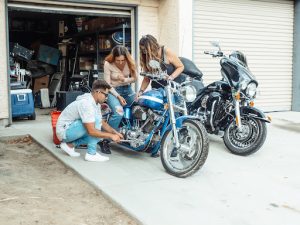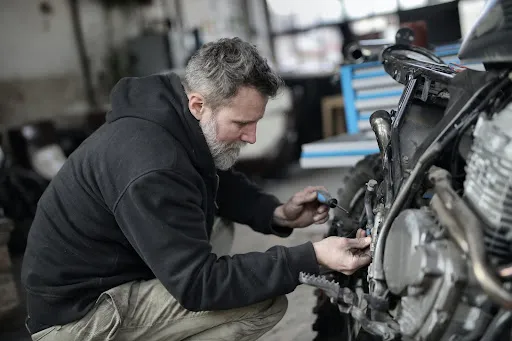Motorbikes hold a special place in the hearts of enthusiasts. The thrill of the open road, the rumble of the engine, and the feeling of freedom are unmatched. However, as time passes, these machines can become worn and lose their former glory.
That’s where White’s Bodyworks motorbike restoration comes in. In this comprehensive guide, we will explore the art of motorbike restoration, from understanding the process to tips for bringing these two-wheeled beauties back to life.
The Art of Motorbike Restoration
Motorbike restoration is more than just fixing a machine; it’s about preserving a piece of history and paying homage to the craftsmanship of the past. Let’s delve into the key aspects of this art:
- Researching and Planning-Before diving into the restoration process, take the time to research and plan. Gather information about your specific bike model, its original specifications, and any unique features. This knowledge will guide your restoration journey and ensure that you stay true to the bike’s original design.
- Assessing the Condition-The first step in any restoration project is assessing the condition of the bike. Carefully inspect every component, from the frame to the engine, noting any damages, rust, or missing parts. This assessment will help you create a comprehensive restoration plan and estimate the time, effort, and cost involved.
- Stripping and Cleaning-To restore a motorbike properly, you’ll need to strip it down to its bare bones. Remove all the parts, such as the bodywork, engine components, and electrical wiring. Take the opportunity to clean each part thoroughly, removing dirt, grime, and rust.
- Mechanical Restoration-Restoring the mechanical aspects of your motorbike is crucial for both safety and performance. Here are some key components to focus on:
-
Engine Rebuild
- The heart of any motorbike is its engine. If it’s not running as it should, a rebuild may be necessary. This involves disassembling the engine, inspecting all parts, replacing worn components, and reassembling everything with precision. Seek professional help if you’re not confident in tackling this task yourself.
-
Suspension and Brakes
- A smooth ride and reliable stopping power are essential for a restored motorbike. Inspect the suspension forks, shocks, and brakes for any leaks, worn-out seals, or damaged parts. Replace or rebuild these components as needed to ensure optimal performance and safety.
Cosmetic Restoration
- Cosmetic restoration focuses on bringing back the visual appeal of your motorbike. Here are a few key areas to consider:
Bodywork and Paint
- The bodywork is often the most visible part of a motorbike, so restoring it to its original glory is a top priority. Repair any dents or rust spots, ensuring a smooth surface for painting. Choose a high-quality paint that matches the original colour scheme and apply it meticulously, finishing with a clear coat for protection and shine.
-
Chrome and Polishing

- Chrome parts can add a touch of elegance to any motorbike. Restore the shine by carefully polishing the chrome surfaces using specialised products and techniques. Pay attention to details, such as handlebars, exhaust pipes, and fenders, to achieve a show-worthy finish.
Tips for a Successful Restoration
- Restoring a motorbike is a labour of love, but it can also be a challenging endeavour. Here are some tips to help you along the way:
-
Take Your Time
- Restoration projects require patience and attention to detail. Don’t rush the process; take your time to ensure each step is done correctly. Rushing can lead to mistakes and compromises in the quality of your restoration.
-
Documentation and Photography
Document your restoration journey through photographs and detailed notes. Not only will this serve as a record of your hard work, but it can also help when reassembling the bike or troubleshooting issues later on.
Seek Expert Assistance

- If you encounter challenges or come across tasks that are beyond your skill level, don’t hesitate to seek expert assistance. Professional advice can prevent costly mistakes and ensure that your motorbike is restored to its full potential.
Bringing History Back to Life
- Motorbike restoration is a labour-intensive process that requires a combination of skill, patience, and passion. By following the steps outlined in this guide and paying attention to the intricate details, you can bring a piece of history back to life. Whether it’s a vintage classic or a sentimental bike from your youth, the joy of riding a restored motorbike is unparalleled. So, roll up your sleeves, embrace the challenge, and embark on a rewarding journey to revive the glory of these two-wheeled marvels.

